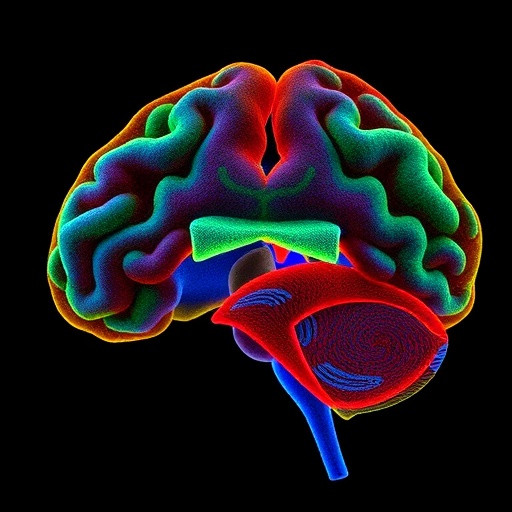A recent groundbreaking study published in Nature has unveiled the critical role of a human-specific genetic element, LTR5Hs, in the regulation of gene expression crucial for early human development. This discovery sheds light on how unique regulatory mechanisms govern the human epiblast—the cell population that gives rise to the embryo proper—potentially elucidating species-specific developmental pathways.
At the heart of this research is a class of retrotransposons known as LTR5Hs, remnants of ancient viral elements integrated into the human genome. The focus was to disentangle whether the regulatory effects observed in the human epiblast are truly dependent on specific LTR5Hs DNA sequences or merely an artifact of gene silencing techniques. By employing CRISPR-mediated deletions of six distinct LTR5Hs elements near genes integral to epiblast function and pluripotency, the investigators aimed to establish a direct causative link.
In a meticulous approach, human naive pluripotent stem cells (hnPSCs) were engineered to carry precise deletions—either homozygous or heterozygous—in individual LTR5Hs elements. These elements are located in cis landscapes next to pivotal developmental genes such as SUSD2, marking naive pluripotency; ZNF729, associated with naive and formative pluripotency; and BARD1, a BRCA1 partner vital for embryonic development. The careful generation of multiple independent clonal lines allowed for robust comparisons against wild-type controls.
Quantitative PCR analyses revealed a consistent downregulation of candidate genes upon LTR5Hs deletions, establishing the enhancer-like functionality of these retrotransposon-derived sequences. Intriguingly, certain deletions influenced multiple adjacent genes, such as SUSD2/CABIN1 and SERPINB9/SERPINB6, while some target loci remained unaffected in cis, indicative of remarkable selectivity in gene regulatory mechanisms. This specificity alludes to a sophisticated enhancer landscape sculpted by LTR5Hs elements.
Of particular interest was the inability to recover homozygous deletions of the SERPINB9-associated LTR5Hs, hinting at an essential developmental role or viability effect. Additionally, clones lacking the LTR5Hs element near ZNF729 exhibited reduced proliferation rates, underscoring the functional relevance of this regulatory region in cell growth dynamics. Yet, morphologically, these deletions did not result in overt changes, emphasizing subtle molecular control rather than gross cellular phenotype disruptions.
The versatile enhancer attributes of LTR5Hs were further corroborated by their capacity to activate promoters located at variable genomic distances and in both orientations relative to the target gene. These features resonate with classical enhancer paradigms, showcasing evolutionary innovation by co-opting retroviral sequences for developmental gene regulation. Such hominoid-specific enhancers appear to underpin the unique regulatory architecture characterizing human embryogenesis.
Cross-species analyses provided compelling evidence of evolutionary divergence. LTR5Hs elements are exclusive to humans; their regulatory targets, such as ZNF729, exhibit conserved gene sequences but lack comparable expression in non-human primates like rhesus monkeys. This distinction aligns with the presence of LTR5Hs in the human genome and absence in other mammals, underscoring the intertwined evolution of genetic elements and species-specific developmental processes.
Functionally, the deletion of the LTR5Hs adjacent to ZNF729 resulted in a profound impairment of blastoid formation—a three-dimensional in vitro model mimicking human blastocyst development. Rescue experiments, wherein ZNF729 was overexpressed in deletion lines, restored blastoid generation, illustrating a causative role for this enhancer-gene duo in early embryonic architecture. This model offers an unprecedented window into human pre-implantation development, impossible to study directly in vivo.
The study’s integration of molecular genetics, stem cell biology, and evolutionary genomics heralds a new era of understanding how ancient viral sequences have been repurposed as critical regulatory elements during human evolution. By harnessing CRISPR technologies and sophisticated in vitro models, researchers have delineated a human-specific enhancer landscape governing pluripotency and early developmental competence.
Importantly, the findings also open avenues for exploring how dysregulation of such enhancers might contribute to developmental disorders or impact regenerative medicine strategies. The unique regulatory control unveiled here challenges researchers to reconsider the roles of repetitive elements traditionally deemed “junk DNA,” proposing instead that they are vital contributors to human biology.
This research not only charts new territory in the understanding of gene regulation during human development but also underscores the complexity and ingenuity of genomic evolution. The enhancement of epiblast gene expression by LTR5Hs illustrates a sophisticated mechanism by which humans may have evolved unique embryonic features with implications for species-specific physiology.
Future directions include parsing the interplay between LTR5Hs enhancers and the broader epigenetic landscape, deciphering the mechanisms guiding their selective activation, and exploring their potential involvement in pathological states. Moreover, leveraging these insights could improve stem cell-based models and therapeutic approaches by aligning them with authentic human developmental pathways.
In summary, the identification of hominoid-specific retroviral enhancers that orchestrate vital gene networks marks a transformative leap in developmental biology. Through precise genomic manipulation and phenotypic assays, this work eloquently demonstrates that the genomic legacy of ancient viruses continues to shape what it means to be human, starting from the earliest stages of life.
Subject of Research: Human-specific LTR5Hs retrotransposons function as enhancers driving gene expression in the human epiblast during early development.
Article Title: A human-specific regulatory mechanism revealed in a pre-implantation model.
Article References: Fueyo, R., Wang, S., Crocker, O.J. et al. A human-specific regulatory mechanism revealed in a pre-implantation model. Nature (2025). https://doi.org/10.1038/s41586-025-09571-1
Image Credits: AI Generated
Tags: CRISPR gene editing techniquesdevelopmental gene regulation in humansearly human development mechanismsembryonic development genetic factorsepiblast gene expressionhuman-specific gene regulationintegrative genetic studies in biologyLTR5Hs retrotransposonsnaive pluripotent stem cells researchNature journal groundbreaking studypluripotency and differentiationspecies-specific developmental pathways





